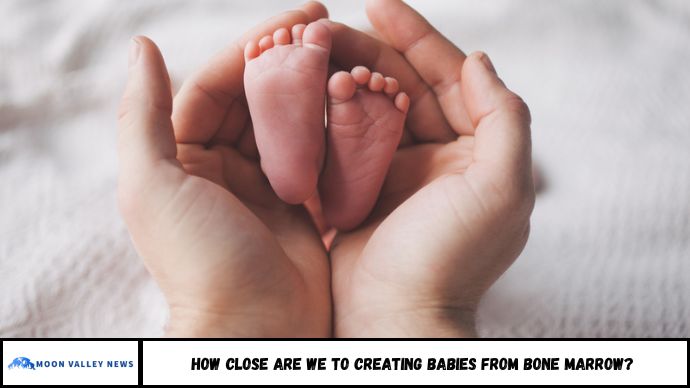Scientists have long explored the possibility of creating babies from bone marrow, a concept that could revolutionize fertility treatment. This article delves into the latest research, scientific hurdles, ethical debates, and how close we really are to making this futuristic idea a reality.
In 2007, scientists made headlines with a bold claim: they had created sperm-like cells from the bone marrow of human men. The discovery sparked excitement about a future where people with infertility could one day conceive using lab-grown reproductive cells. But just two years later, the study was retracted due to allegations of plagiarism—setting the field back and casting doubt on the technology’s readiness.
Today, more than a decade later, creating fully functional human sperm or eggs from stem cells remains one of science’s most complex and elusive goals. Researchers like Dr. Vittorio Sebastiano, a stem cell biologist at Stanford University, are at the forefront of this effort. Their mission: to transform adult cells—like those from skin or bone marrow—into viable human gametes. Success could not only provide new hope for people facing infertility due to genetics, medical treatment, or aging, but also unlock deeper insights into human development.
Since the 2000s, a key breakthrough has been the development of induced pluripotent stem cells (iPSCs)—ordinary skin or blood cells reprogrammed to act like embryonic stem cells. Using iPSCs, researchers have successfully created mouse offspring from lab-generated gametes and even immature human egg cells in lab settings. But the leap from mice to humans remains enormous.
Sebastiano and others see this as a long-term but potentially game-changing frontier:
“We are trying to find ways to efficiently and robustly generate germ cells that, in the long term, could restore fertility,” he explains.
Much like the birth of the first IVF baby in 1978 changed what was possible in reproductive medicine, this next step could rewrite the rules of biological parenthood. For people born without gametes or those rendered infertile by early-life cancer treatments, the future may yet hold a new pathway to conception—driven not by nature alone, but by cutting-edge stem cell science.
Ask ChatGPT
Can We Really Make Babies from Bone Marrow Cells?
Imagine a future where someone who cannot produce eggs or sperm could still have a genetically related child—using just their bone marrow cells. This idea, once reserved for science fiction, has recently moved into the realm of experimental science.
But how close are we to turning this into a reality?
In this article, we’ll explore:
- What the science says so far
- The breakthroughs in reproductive biology
- Why this could be a game-changer for fertility
- The major scientific and ethical challenges ahead
What Does the Science Say?
1. The Concept: Turning Bone Marrow into Gametes
The idea is to take stem cells from bone marrow and reprogram them into egg or sperm cells. These lab-grown gametes could then be used in in vitro fertilization (IVF) to create embryos.
Why bone marrow?
Bone marrow is a rich source of adult stem cells, which have the ability to develop into various cell types, including potentially reproductive cells.
2. Key Milestones in Research
- In 2007, researchers at Newcastle University claimed they had created sperm-like cells from female bone marrow. However, the findings were widely debated and never replicated.
- In 2016, Japanese scientists successfully turned mouse skin cells into eggs, resulting in healthy offspring. This was a critical proof-of-concept for lab-grown gametes.
- As of 2024, researchers continue to make strides in converting induced pluripotent stem cells (iPSCs)—which can be derived from bone marrow—into functional gametes, mostly in animal models.
How Far Are We from Human Trials?
Not There Yet—But Getting Closer
No human baby has ever been born using bone marrow-derived eggs or sperm. All current success stories are limited to animal testing, mostly involving mice.
Major Challenges Include:
- Genetic stability: Ensuring lab-made eggs/sperm don’t carry mutations
- Developmental viability: Will embryos develop normally?
- Ethical approval: Human trials in reproductive biology face strict regulation
- Gender limits: Can bone marrow from men produce eggs? Current research suggests not—egg creation may still require XX chromosomes.
Potential Benefits for Fertility and Medicine
If made viable, this technology could transform reproductive health, especially for people who:
- Are infertile due to cancer treatment
- Suffer from genetic disorders affecting reproduction
- Are same-sex couples seeking biologically related children
- Lost fertility due to aging or injury
It may also offer a new frontier in regenerative medicine, helping scientists understand early development, birth defects, and gene expression.
Ethical and Legal Considerations
While the science is advancing, many bioethicists warn against rushing into human applications.
Key ethical concerns include:
- Designer babies and genetic engineering risks
- The psychological impact of using lab-generated gametes
- Unclear long-term effects on offspring
- Ownership and consent of reproductive materials
As of now, most countries ban or heavily restrict experimentation involving lab-made human gametes.
FAQs
1. Can we currently make babies from bone marrow?
Not yet. The process is still experimental and limited to lab and animal research.
2. What have scientists achieved so far?
They’ve turned mouse skin cells into eggs and sperm, with successful reproduction. Human applications are still years away.
3. Who could benefit from this technology?
Infertile individuals, cancer survivors, same-sex couples, and others unable to produce eggs or sperm naturally.
4. Are there risks involved?
Yes. Genetic abnormalities, ethical concerns, and unknown long-term effects make this a highly cautious field.
5. When could human trials begin?
Experts estimate it may take 10–20 more years before we see viable, safe human applications.
6. Could men one day produce eggs?
Not with current science. Egg development seems to require XX chromosomes, which males do not have.
Conclusion
While babies from bone marrow aren’t a reality yet, the rapid pace of stem cell and fertility research makes it a possibility within our lifetime. Still, scientific, ethical, and regulatory hurdles remain. The idea offers immense hope for millions but requires careful, responsible development.







